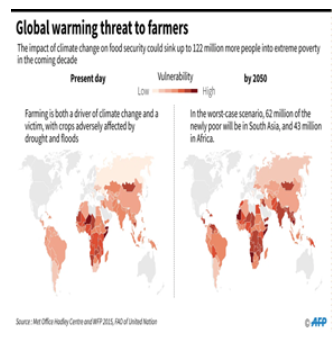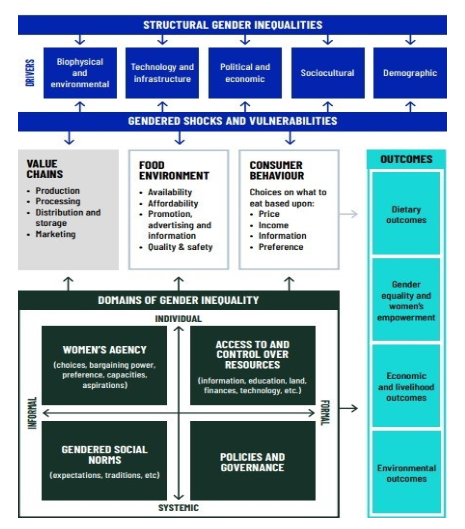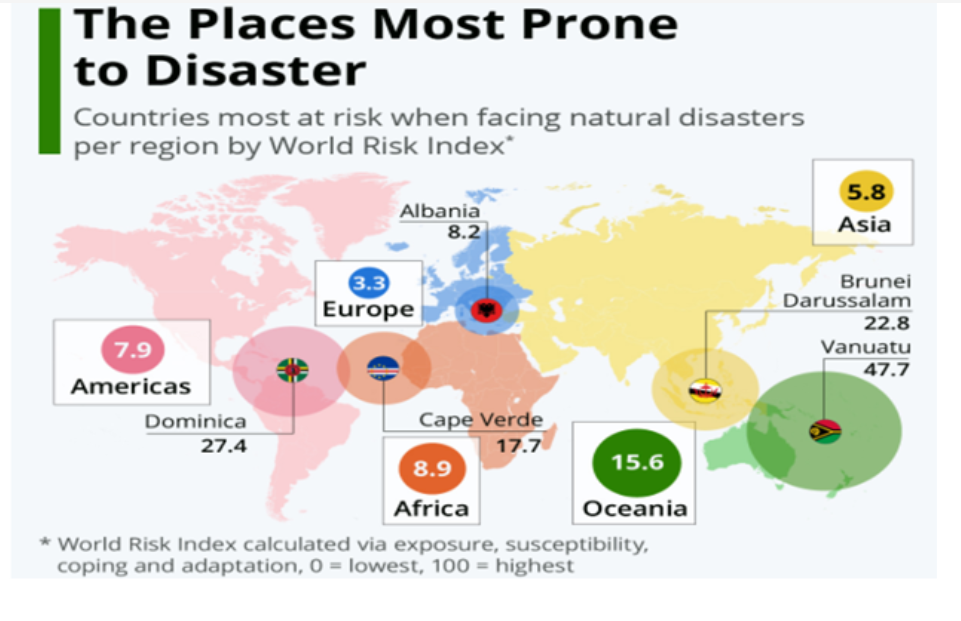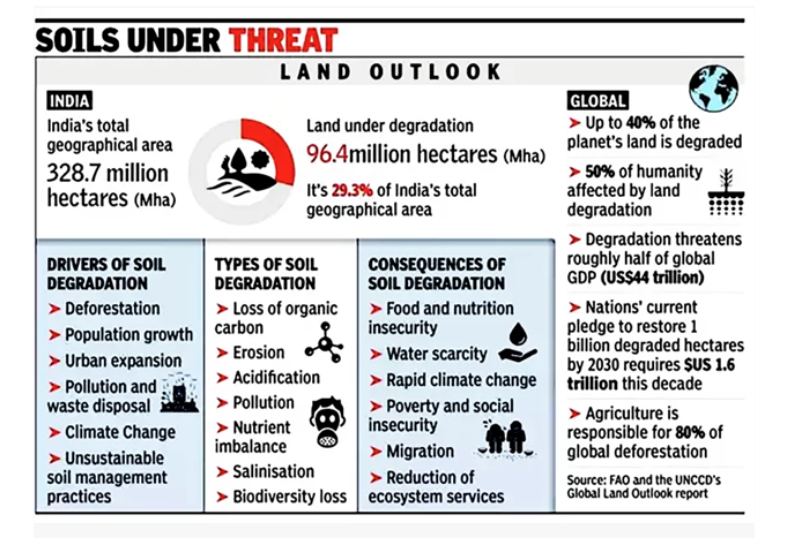24 Dec to 10 Jan, 2024
MIGRATION AND MOBILITY
Why in news : Recently, the Union Cabinet granted ex-post facto approval to the Migration and Mobility Agreement between India and Italy.
About :
Definition and Scope of Migration and Mobility
- Migration refers to the movement of people from one place to another with the intent to settle temporarily or permanently in the new location. Migration can be voluntary, such as for economic betterment, or forced, due to reasons like conflict, persecution, or environmental factors.
- Mobility, a broader concept, encompasses the ability and freedom to move. Mobility emphasizes the fluidity and dynamics of movement beyond the traditional idea of permanent relocation.
Importance of Migration and Mobility in the Current Global Context
Migration and mobility are critical components of the globalized world. They play a key role in:
- Economic Development: Migrants often fill labor gaps in host countries and contribute to economic growth. Remittances sent back home are vital for the economies of many developing countries. According to World Bank , global remittances in 2019 reached a record high of $554 billion, exceeding foreign direct investment to low- and middle-income countries.
- Cultural Exchange: Migration leads to the mingling of cultures, fostering diversity, and multiculturalism. Eg. The United States is a melting pot of cultures, largely due to its history of immigration.
- Demographic Changes: Migration can impact the demographic structure, affecting age distributions, population growth, and urbanization patterns. In countries like Japan and Italy, immigrants are helping to offset population decline due to low birth rates.
- Political Relations: Migration policies can influence diplomatic relations between countries. The treatment of migrants and the management of borders are crucial aspects of international politics. The EU-Turkey deal on migration control reflects how migration policies can shape international relations.
- Humanitarian Concerns: The increase in forced migration due to conflicts or environmental changes poses significant humanitarian challenges. The World Bank reports that forced displacement has been alarmingly high, with over 79.5 million people displaced by the end of 2019.
Brief Overview of Global Migration Trends
- Increase in Numbers: The number of international migrants has been steadily increasing, reaching unprecedented levels in recent years. The International Organisation for MIgration revealed that the number of international migrants has increased by over 60% since 2000.
- Diversification of Destinations: Traditional migration destinations remain popular, but there's a growing trend towards more diverse and new destinations. Canada's increasing popularity as a destination for immigrants, partly due to its welcoming immigration policies.
- Forced Migration: There is a significant rise in forced migrations due to conflicts, political instability, and environmental changes. Eg. The Syrian crisis led to over 5.6 million refugees as of 2021.
- Policy Changes: Globally, migration policies are continuously evolving, reflecting changing political, economic, and social dynamics. United States shifting immigration policies under different administrations significantly impact migration trends.
- Impact of Technology and Globalization: Advances in technology and increased globalization have made it easier and more desirable for people to move across borders, whether for work, study, or leisure.
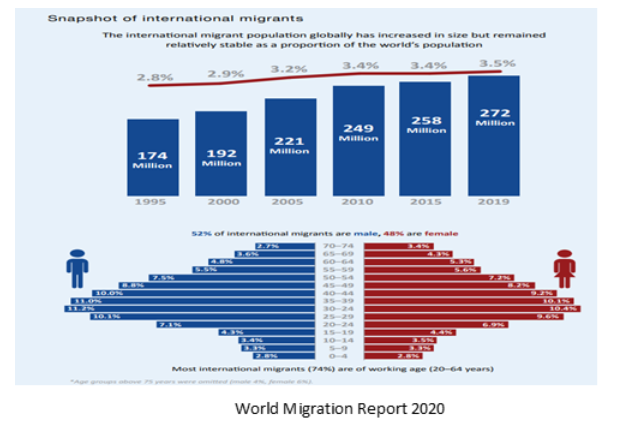
|
PUSH AND PULL FACTORS FOR IMMIGRATION |
||
|
PUSH FACTORS |
MIGRANTS |
PULL FACTORS |
|
Demographic factors and Social Infrastructure |
|
|
Economic factors |
|
|
Political factors |
|
|
Ecological factors |
|
|
Migrant Flows and Migrant Stocks |
|
INTERNAL MIGRATION
Researchers have, from time to time, suggested various types of migration while taking into account space, time, volume and direction. On the basis of space, there are four important streams of internal migration. These are:
i) Rural to rural : In India, as stated earlier, rural to rural migration formed the dominant migration stream in the 1961, 1971, 1991 and 2001 Census . Rural to rural migration is mostly dominated by females. The female migration is largely sequential to marriage
ii) Rural to urban : There have been substantial increases in the proportion of rural to urban and urban to urban migration with the passage of time, the increase being much more during the decades of 1970s, 1980s and 1990s than of the 1960s.
iii) Urban to urban : This trend is driven by the concentration of economic activities and opportunities in major urban centers. The United Nations projects that by 2030, India will have 68 cities with populations over one million.
iv) Urban to rural : Movement of people from urban areas to rural regions are influenced by factors like retirement, lifestyle changes, agricultural opportunities, or economic downturns in urban areas. Eg. COVID -19
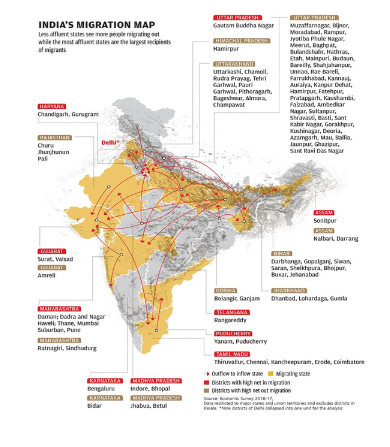
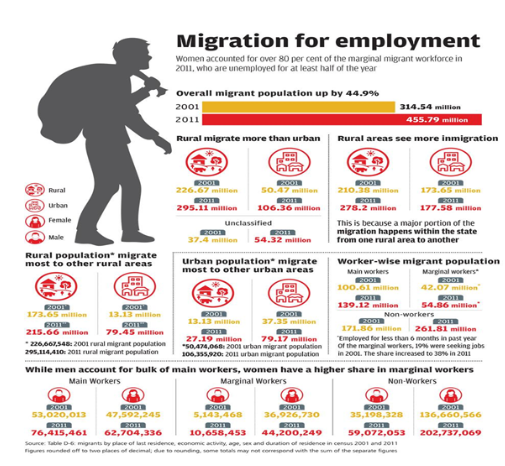
|
CASE STUDY : MIGRATION & REFUGEE CRISIS IN SYRIA The Syrian crisis began in 2011, amidst the Syrian Civil War. People fled due to violence, persecution, and the destruction of infrastructure, seeking safety, security, and better living conditions. It was one of the largest refugee crises, with over 6.6 million Syrians fleeing the country and 6.7 million displaced internally as of 2021. Neighboring countries like Turkey, Lebanon, and Jordan absorbed large numbers of refugees. Many also journeyed to Europe. |
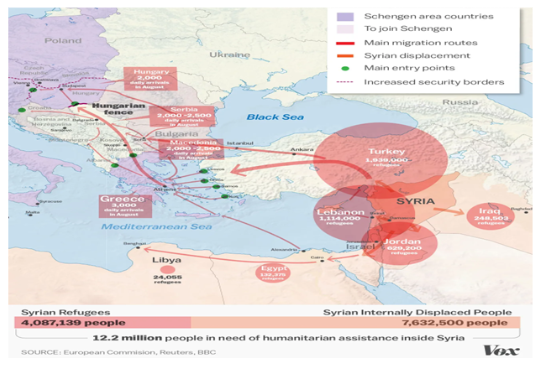
Laws in India for migrant welfare:
- The Inter-State Migrant Workmen Act, 1979 for the welfare of the labourers.
- Under this act, any industry or factory or organisation which wants to employ migrant workers must register with destination states.
- Contractors must acquire a licence from the government authority of the host states and home states. But this Act was never fully implemented.
- This Act has been subsumed into the four broad labour codes notified by the Centre but these have not been implemented yet:
- The Occupational Safety, Health and Working Conditions Code – 2020
- The Code on Social Security – 2020
- The Industrial Relations Code – 2020
- The Code on Wages – 2019
Suggestions to Curb Migration
- Economic Development in Rural Areas : Boosting rural economies can reduce the push factor of economic migration.Example: The Mahatma Gandhi National Rural Employment Guarantee Act (MGNREGA) provides employment in rural areas, helping to curb rural-to-urban migration.
- Improving Agricultural Productivity: Enhancing agricultural practices and technology can make rural life more sustainable. Eg. The Green Revolution in India significantly improved agricultural yields, supporting rural livelihoods.
- Urban Infrastructure Development : Upgrading urban infrastructure can make cities more livable and better equipped to handle migration.Eg: The Smart Cities Mission aims to develop sustainable and inclusive urban habitats.
- Education and Skill Development : Investing in education and vocational training can help individuals find local employment. The Skill India Mission aims to train over 400 million people in India in different skills by 2024.
- Decentralization of Industries : Promoting industrial development in smaller towns and rural areas can reduce migration to mega-cities. Eg. The development of IT hubs in cities like Pune and Hyderabad, beyond traditional centers like Bangalore and Chennai.
- Enhancing Social Security : Strengthening social security measures can reduce the necessity of migration for better services. Eg. The Ayushman Bharat scheme aims to provide health insurance to underprivileged citizens.
- Climate Change Mitigation : Addressing environmental issues that lead to migration, like droughts and floods. Eg. The National Action Plan on Climate Change (NAPCC) focuses on sustainable development and climate resilience.
- Policy Framework and Good Governance : Implementing effective policies and governance to manage urbanization and migration pressures. Eg. Kerala's model of decentralized governance has been effective in managing local development, reducing distress migration.
Conclusion :
By 2050, we envision a world where migration is not a response to crisis but a testament to human aspiration and cultural exchange. A world where the boundaries of nations are not barriers but gateways to a shared future. In this world, India, with its rich tapestry of diversity, has the potential to be a leading example of how a nation can transform its migration challenges into stepping stones for a prosperous, inclusive future.
Source : PIB , Times of India
Where to use :
Paper I ( Geography Optional ) : Migration , Population Geography
Paper I ( General Studies ) : Population related issues .
LOSS, DECAY AND BLEACHING: WHY SPONGES MAY BE THE CANARY IN THE COAL MINE FOR IMPACTS OF MARINE HEATWAVES
Why in news : New Zealand recorded the largest-ever sponge bleaching event off its southern coastline caused by marine heatwaves earlier this year.
About :
- Sponges, like corals, harbor symbiotic organisms. An example of this is seen in Cymbastella lamellata, where it houses dense populations of diatoms.
- These diatoms, which are small single-celled photosynthetic plants, contribute to the sponge's brown coloration. They reside within the sponge tissue, engaging in a mutual exchange of food for protection.
- In instances of sponge bleaching, the diatoms are expelled, revealing the sponge skeleton underneath.
- Tissue loss in sponges occurs when they experience stress, necessitating increased energy investment in cell repair, or when their food source becomes depleted, leading them to reabsorb their own tissue to reduce body volume and reallocate resources.
- Tissue decay or necrosis is typically linked to shifts in the microbial communities residing within sponges and the proliferation of pathogenic bacteria.
- In New Zealand, they occupy up to 70% of the available seafloor. They are found extensively in mesophotic ecosystems at depths of 30-150m.
Functions of Sponges
- Filter large quantities of water.
- Capture small food particles.
- Moving carbon from the water column to the seafloor.
- It provides food for bottom-dwelling invertebrates.
- Sponges add 3-dimensional complexity to the sea floor.
- It provides habitat for various species such as crabs, shrimps and starfish.
|
Difference from Corals |
|
|
Corals are complex, many-celled organisms |
Sponges are very simple creatures with no tissues. |
|
All corals require saltwater to survive |
While most sponges are found in the ocean, numerous species are also found in fresh water and estuaries. |
Recent event of Sponge bleaching-Recent event of Sponge bleaching-
- On the southern coastline of New Zealand, bleaching events have been observed, while central areas of New Zealand's coastline do not currently show signs of bleaching.
- One specific species, the cup sponge Cymbastella lamellata, experienced adverse effects as a result of a prolonged marine heatwave.
- A marine heatwave is characterized as an occurrence in which seawater temperatures surpass a seasonally-varying threshold, usually the 90th percentile, for a minimum of 5 consecutive days. Heatwaves that occur successively with gaps of 2 days or less are considered to be part of the same event.
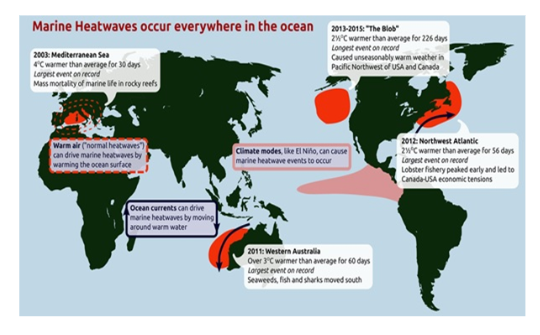
Where to use:
Paper I ( Geography Optional ) : Biogeography
Paper III ( General Studies ) : Environment and Biodiversity , Threat due to climate change
PROPOSED HYPOTHESIS ON PARTING THE RED SEA
Why in news : The story of parting the Red Sea for the Hebrews to escape from Egypt is seen as a miracle in the Book of Exodus. But now, some researchers have looked at this story in a different way, explaining it using some meteorological phenomenons.
About :
Recent Meteorological Hypotheses Related to Parting of the Red Sea
Four meteorological events have been hypothesized by researchers as potential factors that could have temporarily separated the waters of the Red Sea:
- Medicane: In the Mediterranean region, there are storms resembling hurricanes that can lead to extremely severe negative storm surges, ultimately driving coastal waters backward and uncovering landmasses.
- The researchers draw a parallel between Hurricane Irma's consequences on Florida's coastline and the phenomenon they are studying.
- Wind Setdown : In the Gulf of Suez, persistent high-speed winds might create a temporary opportunity by revealing raised reefs and facilitating a passage.
- The presence of an "east wind" mentioned in the Bible's narrative of the Exodus aligns with this specific phenomenon.
- Tidal Resonance : Unusually low tides and the exposure of significant seabed areas can occur when external forces, such as strong winds, coincide with a region's natural tidal cycles.
- The Bay of Fundy, situated along the US-Canada border in the North Atlantic, stands as a significant instance of this phenomenon.
- Rossby Waves : The displacement of water masses is a consequence of the Earth's rotation, which produces large-scale waves in both the oceans and the atmosphere.
- These phenomena occurring in the Red Sea could have briefly established a pathway, either shallow or dry, for the Israelites.
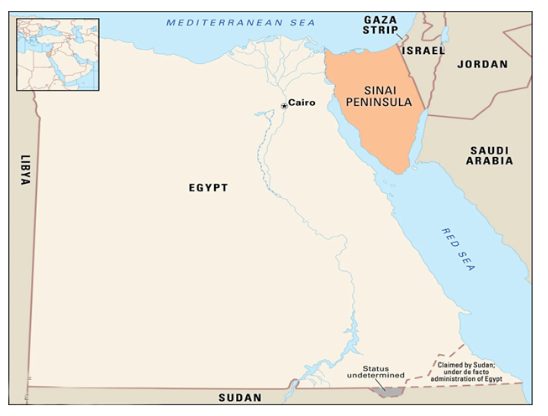
While the study's conclusions hold value, they are circumscribed by the uncertainties related to ancient geography and climate, as well as the inherent intricacies of modeling natural phenomena. The reinforcement of supporting evidence necessitates additional research and archaeological investigations.
Source: DTE
Where to use:
Paper I ( Geography Optional ) : Physical Geography
Paper I ( General Studies ) : Geographical Features and their location
Nationally determined contributions
Nationally determined contributions : It is a non-binding national plan that outlines climate change mitigation. It includes climate-related targets for greenhouse gas emission reductions. The updated NDC aims to reduce GDP emissions intensity by 45% by 2030 from 2005 levels. The updated NDC is a step towards India's goal to reach net-zero emissions by 2070. Recently,India achieved two targets of Nationally Determined Contribution well ahead of the time.
Global methane pledge - Edukemy Current Affairs
Global methane pledge : It is a voluntary agreement to reduce global methane emissions by at least 30% from 2020 levels by 2030. The pledge was announced in 2021 by the United States and the European Union and signed by nearly 100 countries. The pledge is non-binding and does not assign targets to individual countries. Recently , the Global Methane Pledge (GMP) Ministerial welcomed national actions and grant funding to reduce methane emissions by at least 30% by 2030.
Anadromous
Anadromous : Anadromous is a life cycle where fish live most of their life in saltwater but return to where they hatched to spawn in freshwater. Less than 1% of the world's fish population is diadromous. Anadromous fish make up around 75% of the diadromous population, while the remaining 25% are catadromous.
Diel Vertical Migration
Diel Vertical Migration : It is a daily, synchronized movement of marine organisms between the surface and deep layers of the ocean. It's also known as diurnal vertical migration. It is the largest animal migration on the planet, undertaken by trillions of animals every day. It's often seen in deep-sea creatures like zooplankton, which ascend towards the surface at night and descend to deeper levels during the day.
Sponge Farming
Sponge Farming : Sea sponge aquaculture is the process of farming sea sponges under controlled conditions. It has been conducted in the world's oceans for centuries using a number of aquaculture techniques. They are mainstays in the cosmetic industry. Recently , New Zealand recorded the largest-ever sponge bleaching event off its southern coastline.
CLIMATE INDUCED MIGRATION - SAGAR ISLAND, SUNDERBANS INDIA
Sunderbans, home to about 4.5 million people, is facing the unprecedented wrath of natural calamities , owing to recurring Cyclones like Amphan, sea level rise ( 3.14mm per year ) , salt water intrusion and tidal surges. Such environmental disasters have already pushed 69000 residents to mainland India and Bangladesh. Inadequate income opportunities, exploitation by money lenders, damage to weak infrastructure , rice and betel cultivation impact due to soil salinity combined together results in climate induced migration.

Source :
https://www.dw.com/en/forgotten-people-sundarbans-climate-refugees-forced-to-move-again/a-61162969
Where to use :
Paper I ( Population Geography ) : Migration
Paper III ( General Studies ) : Environment disasters
Places in news - Mudl
1. Mudli
Why in news : Recently the 'World's Largest Meditation Centre' was inaugurated by PM Modi at Mudli.
- Mudli is a small Village/hamlet in Chiraigaon Block in Varanasi District of Uttar Pradesh State, India. It comes under Mudli Panchayath. It belongs to Varanasi Division.
- This Place is in the border of the Varanasi District and Chandauli District.
- Approx. Varanasi.
2. Joshimath
Why in news : Recently , center clears Rs 1658 cr recovery and reconstruction plan for Joshimath
- It is a hilly town located on the Rishikesh-Badrinath National Highway (NH-7) in Chamoli district of Uttarakhand.
- The town (fall in high-risk seismic Zone-V) is traversed by running streams with a high gradient from Vishnuprayag, a confluence of the Dhauliganga and the Alaknanda rivers.
- It is home to one of the four cardinal maths or monasteries established by Adi Shankara - Sringeri in Karnataka, Dwarka in Gujarat, Puri in Odisha and Joshimath near Badrinath in Uttarakhand.
- Approx. Chamoli
3. Ropar
Why in news: A team of researchers from the Indian Institute of Technology (IIT), Ropar has detected the presence of tantalum , a rare metal used in electronics and semiconductors.
- It is a town in the northwest Indian state of Punjab, located on the Sutlej River, close to the entrance to the Sirhind Canal. The town is also known as Rupnagar.
- It is an Indus Valley settlement that was the center of a well-developed Indus Valley Civilization.
- Approx. Hoshiarpur
4. Sundargarh
Why in news : NGT takes note of 11 units in Sundargarh for flouting norms.
- It is recognized as an industrial district in Odisha.
- It occupies a prominent position in the mineral map of Odisha and is rich in iron ore, limestone, and manganese.
- The Ib river flows in the northern part of the district.
- The climate of this district is characterized by extremely hot summers and cool winters. The climate is hot and moist sub-humid. The normal rainfall of the district is approximately 1230 mm.
- Approx. Jharsuguda
5. Mandla
Why in news: In Amjhar village of Mandla district in Madhya Pradesh, residents regularly remove lantana saplings from the common land that was cleared of the weed in 2022.
- It is a district of Madhya Pradesh in central India and is part of Jabalpur Division.
- It is one of the 24 districts in Madhya Pradesh currently receiving funds from the Backward Regions Grant Fund Programme (BRGF).
- Much of the district is forested, and it is home to Kanha National Park, a Project Tiger sanctuary
- The district is also home to Mandla Plant Fossils National Park.
- Approx. Jabalpur.
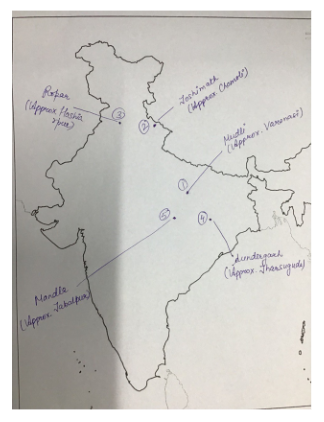
Fortnightly KOSMOS MCQ Practice
Q1. Consider the following statements regarding National Green Tribunal (NGT) :
- The National Green Tribunal (NGT) came into existence pursuant to the Environment Protection Act of 1986.
- The appointment of the NGT Chairperson is made by the President of India.
- NGT functions in accordance with the regulations specified in the Code of Civil Procedure of 1908.
How many of the above statements are not correct?
- Only one
- Only two
- All three
- None
Q2. With reference to the Kiwi Bird, Consider the following statements:
- Kiwi is a bird that cannot fly and is native to New Zealand.
- IUCN ( International Union for Conservation of Nature (IUCN), has listed it as "Vulnerable" .
- The Capital Kiwi Project in New Zealand strives to revitalize a sizable wild kiwi population through initiatives led by the community.
How many of the statements given above are not correct?
- Only one
- Only two
- All three
- None
Q3. Consider the following statements , regarding Diel Vertical Migration (DVM) :
- The synchronized movement of marine organisms, known as DVM, is frequently observed in deep-sea creatures such as zooplankton.
- This coordinated pattern serves as a strategic survival tactic, enabling these organisms to locate food and evade predators effectively.
- DVM plays a role in capturing carbon dioxide, contributing to the regulation of atmospheric carbon concentration.
Which of the statements given above is/are correct?
- 1 and 2 only
- 2 only
- 3 only
- 1, 2 and 3 only
Q4. With reference to ethanol production, consider the following statements:
- In 2023, India introduced a 20% ethanol-blended petrol and intends to extend this coverage nationwide by 2025.
- Grains exhibit higher ethanol yields than molasses
Which of the statements given above is/are correct?
- 1 Only
- 2 Only
- Both 1 and 2
- Neither 1 nor 2
Q5. Scimitar-horned oryx, recently in news, is is best described as:
- An antelope
- A deep-sea carnivore
- A rare avian species
- An amphibious
Q6. Consider the following statements regarding Special Economic Zone (SEZs):
- Special Economic Zones (SEZs) are designated areas subject to economic laws more stringent than those of a country's domestic regulations.
- Kandla in Gujarat witnessed the establishment of Asia's inaugural Export Processing Zone in 1965.
Which of the statements given above is/are correct?
- 1 Only
- 2 Only
- Both 1 and 2
- Neither 1 nor 2
Q7. Consider the following statements:
- In the Extended Producer Responsibility (EPR) mechanism, the financial responsibility for waste management is transferred from the producer to the government.
- Principle of 'polluter pays' emphasizes that the entities responsible for producing pollution should assume the costs associated with its management.
Which of the statements given above is/are correct?
- 1 Only
- 2 Only
- Both 1 and 2
- Neither 1 nor 2
Q8. Consider the following statements regarding the Wild Yak :
- The present habitat of the Wild Yak is confined solely to Bhutan and Nepal.
- The Wild Yak is listed in Schedule I of the Wildlife (Protection) Act of 2022.
- IUCN has classified it as critically endangered.
How many of the statements given above are correct?
- Only one
- Only two
- All three
- None
Q9. Consider the following statements regarding the Gulf of Aden :
- It is located between Yemen on the southern coast of the Arabian Peninsula and Somalia in Africa.
- It links the Red Sea to the Arabian Sea through the Strait of Bab el Mandeb.
Which of the statements given above is/are correct?
- 1 Only
- 2 Only
- Both 1 and 2
- Neither 1 nor 2
Q10. With reference to the Climate Change Performance Index (CCPI), consider the following statements:
- The CCPI functions as an autonomous monitoring tool to evaluate the climate protection performance of countries.
- It has been released on an annual basis, since 2005
- The publication of the CCPI involves collaboration between Germanwatch, the NewClimate Institute, and Climate Action Network International.
How many of the statements given above are not correct?
- Only one
- Only two
- All three
- None
Q11. Consider the following statements regarding the Namdapha Flying Squirrel:
- It is a rare nocturnal species of flying squirrel discovered in the Namdapha Tiger Reserve in Arunachal Pradesh.
- It is listed as Critically Endangered in the IUCN Red List, and categorized under Schedule I of the Wildlife (Protection) Act.
Which of the statements given above is/are correct?
- 1 Only
- 2 Only
- Both 1 and 2
- Neither 1 nor 2
Q12. Consider the following pairs:
|
Volcanic Region |
Country |
|
1. Mt. Ararat |
Turkey |
|
2. Kamchatka Peninsula |
China |
|
3. Eyjafjallajokull |
Iceland |
How many of the above pairs are correctly matched?
- One only ‘
- Two only
- Three only
- None
Q13. Consider the following statements regarding the Rare Earth Metals :
- Rare Earth Metals constitute a group of seventeen metallic elements, encompassing the fifteen lanthanides.
- India holds the position of the second-largest exporter of Rare Earth Metals
Which of the statements given above is/are correct?
- 1 Only
- 2 Only
- Both 1 and 2
- Neither 1 nor 2
Q14. Consider the following statements:
- In the Integrated Development of Wildlife Habitat (IDWH) framework, the evaluation and monitoring of populations are focused on threatened species such as marine turtles and humpback whales.
- Dugong Conservation Reserve in Palk Bay has been instituted for conservation of Dugongs and marine species associated with seagrass.
- The government's conservation initiative, Project Dolphin, specifically aims to preserve riverine dolphin species.
Which of the statements given above are correct?
- 1 and 2 only
- 2 and 3 only
- 1 and 3 only
- 1, 2 and 3
Q15. With reverence to the Nationally Determined Contribution (NDC) of India, consider the following statements:
- India relies on international climate finance support as the sole means to fund its NDC commitments.
- By 2030, India targets achieving half of the cumulative installed capacity of electric power from energy resources not based on fossil fuels.
Select the correct statements using the codes given below:
- 1 Only
- 2 Only
- Both 1 and 2
- Neither 1 nor 2
Share the article
Edukemy’s Current Affairs Quiz is published with multiple choice questions for UPSC exams
MCQ
Get Latest Updates on Offers, Event dates, and free Mentorship sessions.

Get in touch with our Expert Academic Counsellors 👋
FAQs
Geography Current Affairs focuses on the contemporary issues, events, and developments in the field of geography. It covers recent geographical phenomena, environmental changes, geopolitical shifts, and related news. This differs from regular geography studies which may focus more on foundational concepts, historical contexts, and theoretical frameworks.
Updates are provided regularly to ensure that subscribers stay informed about the latest developments in geography. Typically, updates are provided on a fortnightly basis, depending on the frequency of significant events and changes in the field.
Absolutely. Geography Current Affairs serves as a valuable resource not only for Geography optional but also for GS papers, especially GS Paper 1 (covering Indian Heritage and Culture, History, and Geography of the World and Society) and GS Paper 3 (covering Technology, Economic Development, Biodiversity, Environment, Security, and Disaster Management). It aids in building a holistic understanding of various topics and strengthens answer-writing skills by incorporating contemporary examples and perspectives.
Geography Current Affairs holds immense importance for UPSC preparation, particularly for aspirants opting for Geography optional. It helps candidates stay updated with the latest developments, geographical phenomena, environmental issues, and geopolitical shifts worldwide, aligning them with the dynamic nature of the subject as tested in the UPSC examinations.

